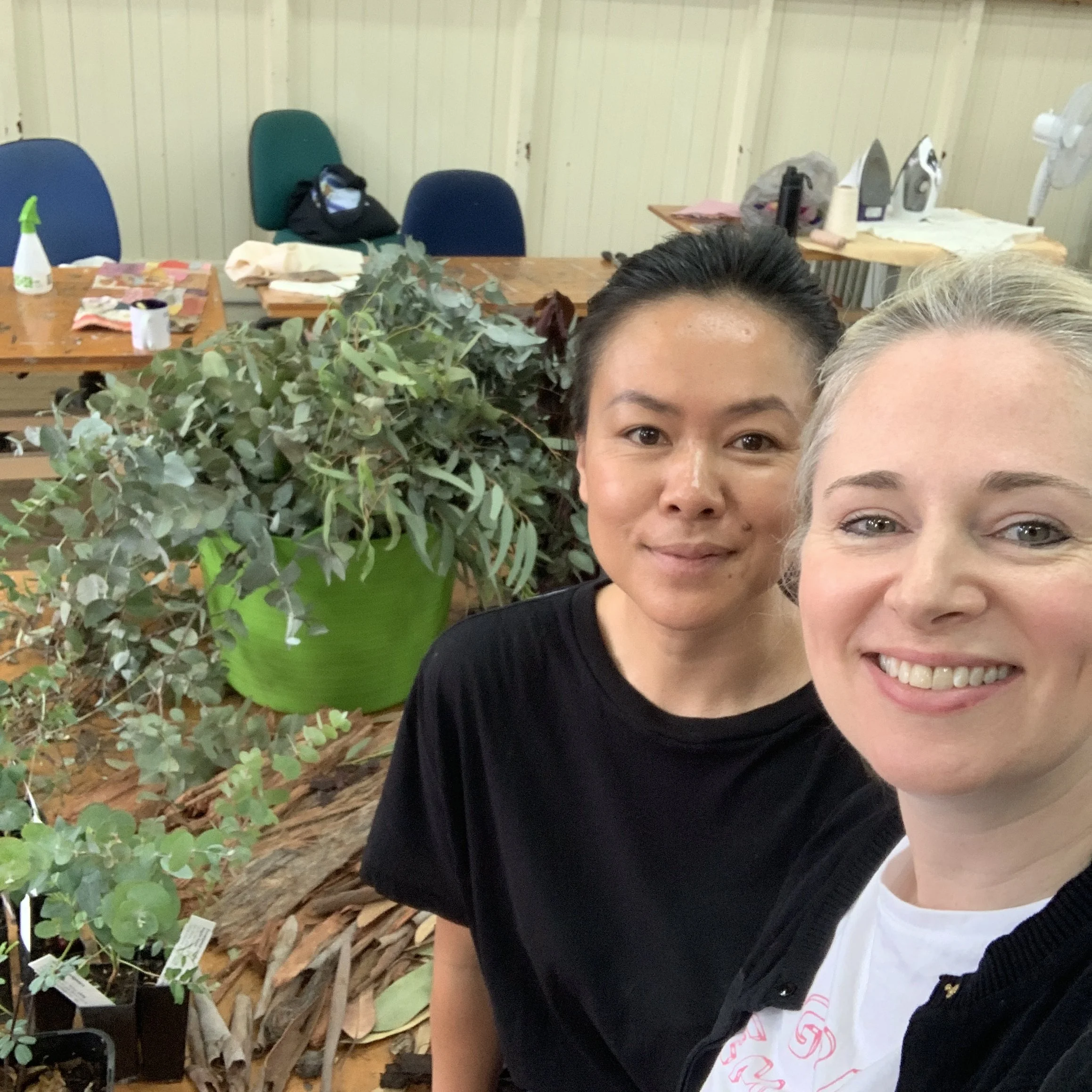On the surface, this is the story of Samorn Sanixay’s epic adventure to map Australia through a colour study of its natural eucalyptus dyes. Last year, she set out to do just that, spending a year travelling around the country collecting leaves from these wonderfully diverse trees wherever she went.
But that's just the starting point of this feel-good interview with the natural dyes expert and co-founder of artisanal weaving studio Eastern Weft in Vientiane, Laos.
Ultimately, this is a conversation about belonging, forming friendships and connections to country, and the idea that we have more in common than we think.
ABOUT SAMORN Samorn Sanixay is weaver and natural dyer based in Canberra, Australia. Samorn has twenty years of experience and first learned traditional Lao textile techniques back in 2002 with village weavers in Laos. These traditions have been passed down from generation to generation for many centuries are still very much practiced in Laos today. She was an apprentice to Master weaver Khaisy Sophabmixay who is from Sam Neua, a town in northern Laos that is famous for its intricate weavings. Samorn and Khaisy then set up Eastern Weft, a weaving cooperative based in Vientiane, Laos that supports disadvantaged young people of ethnic minorities in Laos. Find here on Instagram: @samorn_sanixay
NOTES
EASTERN WEFT was set up by Samorn and Khaisy in 2004. Since then, it has produced textiles for many well known fashion designers and has exhibited in Paris and Japan. In 2019, the studio won an award for Best Supplementary Weft textiles at the ASEAN (Association of South East Asian Nations) Textile Awards. Read more on this lovely blog by Brigid Mclaughlin.
Want more stories about Laos? Listen to this Episode abut Article 22 and The Secret War.
Samorn has been collecting eucalyptus leaves as part of her Dahl Fellowship - different types produce different colours.
NATURAL DYES have been used since ancient times to colour textiles. For a deep dive, listen to Episode 167 presented by Carry Somers. Samorn adapted the 'local and seasonal’ philosophy to her work and has been experimenting with local Australian plants ever since. She teaches wonderful workshops in Australia, like the one Clare attended below. Check out her Instagram for more.
JANUARY 26 – which known, variously, as Australia Day, Invasion Day, Survival Day, and is officially – and divisively - the country’s official national holiday. It’s the date when, in 1788, the First Fleet arrived in Sydney, beginning colonisation. It’s obviously problematic to tie up parties and fun and a day off work with a traumatic event that dispossessed First Nations people. Hence the hashtag #changethedate. Why not celebrate another time? Because the idea of a modern inclusive celebration is meaningful – it’s when, for example, community leaders are honoured, and there are ceremonies for new citizens. Of course not everyone agrees on change the date. Read Boe Spearim’s NITV op-ed here.
LISTEN TO EPISODE 134 WITH BELINDA DUARTE HERE.
BJARNE DAHL was a Norwegian forester who was passionate about Australian eucalypts. The DAHL FELLOWSHIPS provide an opportunity for talented and deserving Australians to undertake a project related to eucalypts that is not readily fundable elsewhere. More here.
Australia’s EUCALYPT TREES are wonderful.
Watch this series to learn all about them.
River red gum (Eucalyptus camaldulensis) is the most widely distributed eucalypt, and is found in all Australian mainland states. The forests of south-eastern Australia contain a wide range of dominant eucalypt species, including major commercial timber species such as mountain ash (E. regnans), messmate stringybark (E. obliqua), alpine ash (E. delegatensis), silvertop ash (E. sieberi), blackbutt (E. pilularis) and spotted gum (Corymbia maculata). Eucalypt forests in south-western Australia are dominated by jarrah (E. marginata) and karri (E. diversicolor). Typical eucalypts of northern Australia include Darwin woollybutt (E. miniata) and Darwin stringybark (E. tetrodonta).
Many species of multi-stemmed mallee eucalypts are found across the inland regions of southern Australia. In inland arid zones, eucalypts are confined to the edges of rivers. Eucalypts are generally not found in the tropical and subtropical rainforests in eastern Australia, or in the warm and cool temperate rainforests of Victoria and Tasmania.
Read about how they adapted to fire on National Geographic, here.
GARMENT FACTORIES IN LAOS “In 2015, Laos had 92 garment factories, out of which 78 are operating now. Seven of these are owned by businessmen from the country, seven are joint ventures and the rest are owned by overseas interests. The Japanese are large investors in the garment sector, followed by the Thai. At present, 50 factories are members of the association with 40 manufacturing exclusively for export and six catering to the domestic market as well as exports. Laos’ garment exports hit $174.23 million in 2016, down by 7.25 per cent from 2014. The main export markets are the European Union, Japan, the United States and Canada.” Via Fibre2Fashion
THE MUSÉE DU QUAI BRANLY is a museum designed by French architect Jean Nouvel to feature Indigenous art and cultures of Africa, Asia, Oceania, and the Americas. The museum collection comprises more than a million objects (ethnographic objects, photographs, documents, etc.), of which 3,500 are on display at any given time, in both permanent and temporary thematic exhibits. A selection of objects from the museum is also displayed in the Louvre. In 2021, the Branly announced it would return some of the Benin Bronzes.
Museums around the world contain pieces that were stolen or taken by force during colonial rule. Do you think they have a right to keep and display these objects? Or should they give them back? Read article in NYT here.
Want to check out SAMORN’S INSTAGRAM POSTS mentioned in the interview? Find them below:









